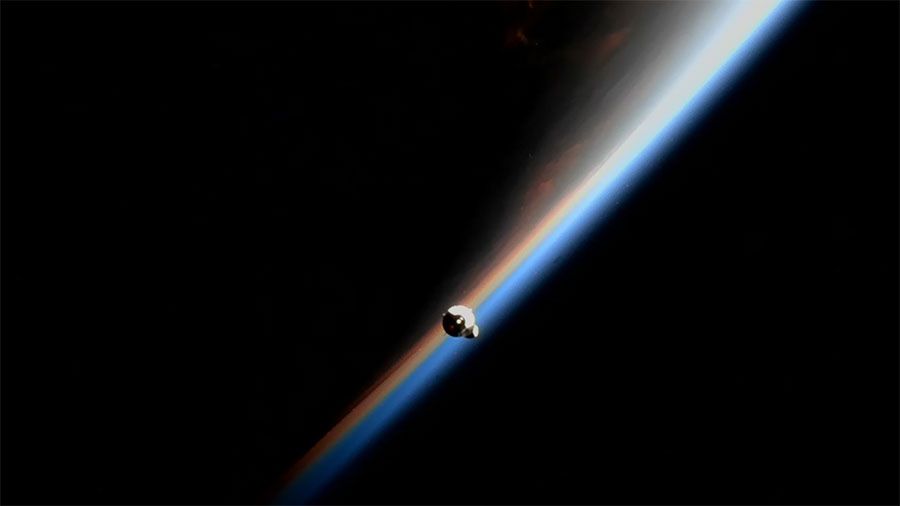Despite loads of circumstantial evidence for the existence of dark matter — the mysterious form of matter that dominates galaxies and clusters — astronomers have yet to make direct observations of it. But the search is not over. One hypothesis for the nature of dark matter is that some of it could be self-interacting, meaning the individual particles interact slightly with one another. If this is true, there would be a host of subtle observational clues for the existence of this subclass of dark matter. A few of these hints…
Read MoreMonth: August 2022
NASA’s Europa Clipper in High Bay 1
The core of NASA’s Europa Clipper spacecraft has taken center stage in the Spacecraft Assembly Facility at the agency’s Jet Propulsion Laboratory in Southern California.
Read MoreWatch NASA’s Artemis 1 SLS megarocket moon launch for free with these live webcasts
NASA’s huge Artemis 1 rocket is counting down to a planned Aug. 29 launch to the moon and when it does, you’ll be able to watch the historic mission live online for free. The space agency will host a series of Artemis 1 webcasts this week and next leading up to the uncrewed launch on NASA’s first Space Launch System megarocket from Launch Pad 39B at the Kennedy Space Center in Florida. The briefings start on Monday, Aug. 22, and run through launch day and include special guests like actors…
Read More‘Magical’ rock crystals found at Stone Age ceremonial site in England
Hundreds of fragments of a rare transparent type of quartz called “rock crystal” suggest Neolithic people used the mineral to decorate graves and other structures at a ceremonial site in western England, archaeologists (opens in new tab) say. The rock crystals were likely brought to the site from a source more than 80 miles (130 kilometers) away, over mountainous terrain, and the crystals appear to have been carefully broken into much smaller pieces, possibly during a community gathering to watch the working of what must have seemed like a magical…
Read MoreScientists blast atoms with Fibonacci laser to make an ‘extra’ dimension of time
By firing a Fibonacci laser pulse at atoms inside a quantum computer, physicists have created a completely new, strange phase of matter that behaves as if it has two dimensions of time. The new phase of matter (opens in new tab), created by using lasers to rhythmically jiggle a strand of 10 ytterbium ions, enables scientists to store information in a far more error-protected way, thereby opening the path to quantum computers (opens in new tab) that can hold on to data for a long time without becoming garbled. The…
Read MoreSpaceX Dragon cargo ship returns to Earth from space station
A SpaceX Dragon cargo ship returned to Earth with an ocean splashdown on Saturday (Aug. 20) carrying tons of science gear from the International Space Station. The uncrewed Dragon space capsule splashed down off the coast of Florida on time at 2:53 p.m. EDT (1953 GMT) after just over a month at the space station. “Splashdown of Dragon confirmed, completing SpaceX’s 25th cargo resupply mission to the space station,” SpaceX wrote in a mission update on Twitter (opens in new tab) today. The company did not provide live views or…
Read MoreThis Week In Space podcast: Episode 25 — A beginner’s guide to dying in space
On today’s This Week in Space, we talk about what it takes to survive in space, or more frankly, how space can kill you and what you can do about. On this episode of This Week in Space (opens in new tab), Rod Pyle and Geoffrey Notkin (opens in new tab) talk to Dr. Bill Tarver, a NASA flight surgeon, to discuss the loss of life in space. Whether during launch, an extended journey, or on the moon, Mars or in orbit, there will be human casualties. How will we deal…
Read MoreOn This Day In Space: Aug. 20, 1977: Voyager 2 launches to the outer planets
On Aug. 20, 1977, NASA launched the Voyager 2 spacecraft on a mission to explore the outer planets. Despite its name, this was the first of the two Voyager missions NASA launched that year. Voyager 2: Sailing Among Giant Planets NASA’s Voyager 2 mission launched on Aug. 20, 1977. (Image credit: NASA/JPL-Caltech) Related stories: Thanks to a rare alignment of the planets, NASA had the opportunity to send a spacecraft on an unprecedented journey to Jupiter, Saturn, Uranus and Neptune.While Voyager 1 ended its planetary mission after Saturn, Voyager 2…
Read MoreDebris from most spectacular comet outburst may explain its perplexing behavior — and be visible in telescopes
Debris from the most spectacular comet outburst ever is visible from Earth this month and astronomers hope the observations might shed some light on the puzzling event that brightened up the sky in 2007. When the faint Comet 17P/Holmes erupted with the brightest cometary burst ever observed in October 2007, astronomers watched in awe. It wasn’t the first time this underwhelming 2.1-mile-wide (3.4 kilometers) comet did it. In fact, the ice ball was only discovered thanks to a similar outburst in 1892. Debris from the 2007 outburst, which at that…
Read MoreNASA’s moon-landing Artemis astronauts will explore 1 of these lunar locales
We now know where on the moon NASA astronauts will set foot after more than 50 years’ absence. The agency announced 13 potential landing regions for its Artemis 3 mission during a news conference held on Friday (Aug. 19). All the candidates are clustered near the south pole of the moon, an area of key scientific and exploration interest alike. “They’re of value to the scientific community and the technology community,” Mark Kirasich, deputy associate administrator for the Artemis Campaign Development Division at NASA, said during the news conference. “People…
Read More
